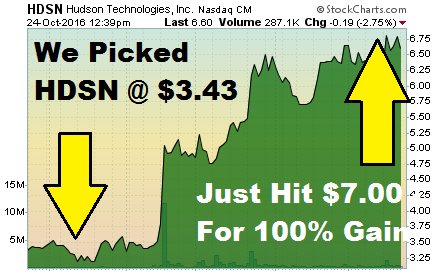After a hectic week that saw Amazon (AMZN), Facebook (FB), and Alphabet (GOOGL) all report earnings, the week ahead will continue the abundance of headline earnings reports and blockbuster economic data.
The busy week of earnings will be punctuated by results from Apple (AAPL) after the market close on Tuesday.
And the economics calendar will bring us the monthly jobs report, which should show the U.S. economy continues to create jobs in the 10th year of the economic recovery. Economists expect the economy added 185,000 jobs in April, a rebound from March’s disappointing headline jobs gain while the unemployment rate is expected to drop to 4% after it held at 4.1% for a sixth-straight month in March.
The Federal Reserve will also announce its latest monetary policy decision on Wednesday, though this announcement should come and go without fanfare as the central bank is widely expected to keep its benchmark interest rate policy unchanged in a range of 1.5%-1.75%.
These reports follows last week’s first estimate on first quarter GDP, which showed the economy grew at an annualized pace of 2.3% in the first three months of the year, better than had been expected by economists but a deceleration from the economic growth seen at the end of last year.
Economic calendar
Monday: Personal income, March (+0.4% expected; +0.4% previously); Personal spending, March (+0.4% expected; +0.2% previously); “Core” PCE, year-on-year, March (2% expected; 1.6% previously); Pending home sales, March (+0.5% expected; +3.1% previously); Dallas Fed manufacturing, April (25 expected; 21.4 previously)
Tuesday: Markit manufacturing PMI, April (56.5 previously); Construction spending, March (+0.5% expected; +0.1% previously); ISM manufacturing PMI, April (58.5 expected; 59.3 previously); Auto sales, April (17.15 million vehicles annualized expected; 17.4 million previously)
Wednesday: ADP private payrolls, April (+193,000 expected; +214,000 previously); Federal Reserve interest rate decision (1.5%-1.75% fed funds range previously, no change expected)
Thursday: Initial jobless claims (209,000 previously); Nonfarm productivity, first quarter (+0.9% expected; 0% previously); ISM non-manufacturing PMI, April (58 expected; 58.8 previously); Markit non-manufacturing PMI, April (54.4 previously)
Friday: Nonfarm payrolls, April (+185,000 expected; +103,000 previously); Unemployment rate, April (4% expected; 4.1% previously); Average hourly earnings, month-on-month, April (+0.2% expected; +0.3% previously); Average hourly earnings, year-on-year, April (+2.7% expected; 2.7% previously)



